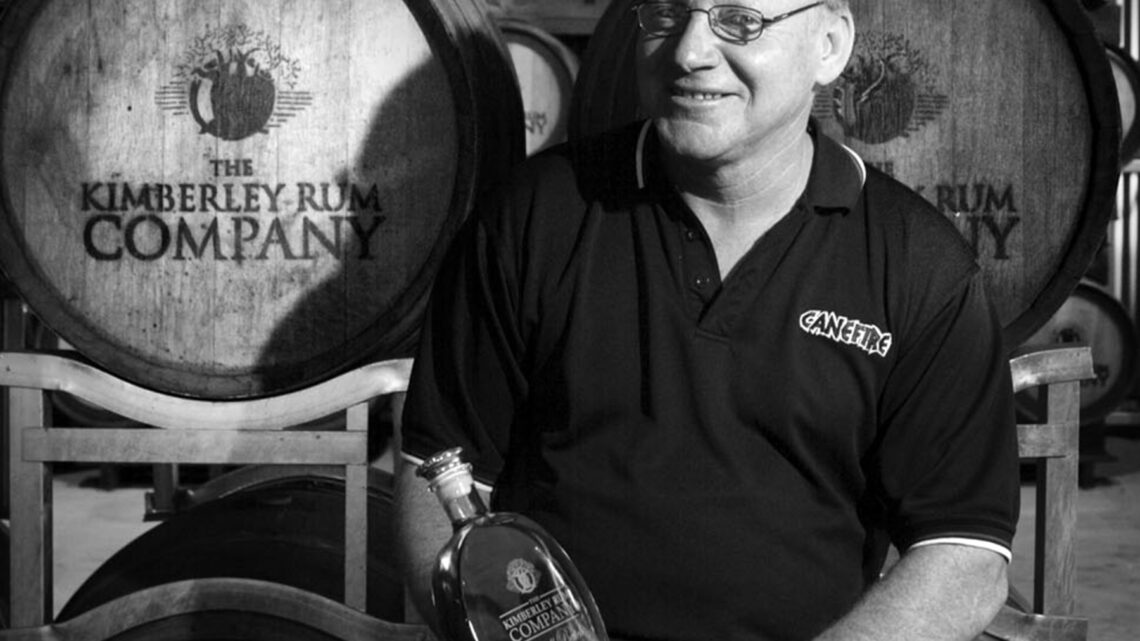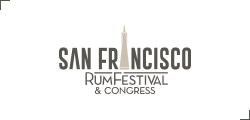The Kimberley Rum Company, Founder – Master Distiller: ROHAN PASSMORE

Rohan is known in the distillery as “The Old Man”. He’s the oracle the staff go to when they have questions or ideas to talk through. He has a varied background and often brings lateral solutions to any discussion.
He was first exposed to oenology when working the ullage still at the state’s largest brewery back in 1978. He officially retired ten years ago but is usually found around the distillery and maturing sheds helping the staff. He handed ownership of the distillery over to his three sons in 2012.
He’s also an avid sailor. He often disappears for months at a time, cruising around the coast of Australia in his home away from the distillery. His yacht is called Canefire. Learn more about him, in the next interview:
TRL: What does the rum mean to you? What made you fall in love with rum and when did it happen?
Rum in Australia had traditionally been a crude, mass-produced spirit. Rohan set out back in 1996 to show that it can be a nuanced high-quality sipping spirit. His motto, “Not all Rums are the same”, was the driving force behind the establishment and development of the Kimberley Rum Company.
TRL: Three essential characteristics that define the rum according to your perspective.
– A natural golden color reflects the oak that it is aged in.
– Light at the front of the pallet. A definite limit to tails and spirit esters.
– Depth should be shown at the back of the palette. Rum should activate the sugar receptors and warm from the inside out.
TRL: What is the most important contribution you have made to the rum industry?
Rohan and his wife Susan were the first to develop rum production in the state of Western Australia. They produced the first-ever bottle of Canefire Rum in 1996 as part of the development of the sugar industry in The Kimberley region. They were the pathfinders in kicking off the boutique distilling industry here.
TRL: Benefits that the rum industry has given you.
The love of educating people in the notion that rum is not just a mixer but can be a subtle, nuanced spirit. Teaching others how to appreciate the quality of fine spirits.
TRL: What’s another thing you are passionate about besides rum? Why?
Rohan Is passionate about everything to do with the ocean. As a sailor, how could he not be a lover of rum as well?
TRL: What is your favorite place for drinking rum?
The back deck of the Canefire yacht at sunset. The number of rums is directly proportional to the firmness of the anchor holding.
TRL: Favorite drink + Recipe
What we call a Canefire special. Canefire 5 with soda water and lime in a pint glass. The ratio of Rum to soda is again proportional to the holding ability of the anchor. More water if you are concerned that you may have to get up during the night if the anchor drags.
TRL: Why is it important to educate the rum consumer?
This has been Rohan’s focus over the last 25 years. Most people think of rum purely as a party drink when they are young. When they mature, like good rums, they need to be shown that not all rums are the same.
TRL: Any tips to train the palate and taste a good premium rum?
The Old Man is our go-to for tasting and blending. Here are his steps to get the most out of tasting.
– Put a small measure in a red wine glass.
– Warm the glass in your palm. The heat from your hand will open up the molecules in the liquor and release the aromas in the drink. You can warm the glass with warm water before serving. However, it’s important to dry the glass before pouring the rum, or else the water droplets can change the flavor profile.
– Swirl the liquid. Swirling in the glass warms it more evenly and opens up the bouquet of aromas.
– Observe the color. The longer a rum ages in a barrel, the darker the color will become and the richer the flavor.
– Hold the glass at chest height. Smell the rum through your nose at this distance to see what subtle aromas you can get initially.
– Hold the glass at chin height. Smell the rum through your nose at this closer distance to catch more of the complexities in the aroma.
– Raise the glass to your nose. With the glass at your nose, take a breath in first through your nose and then through your mouth to catch the aromas.
– Take a small sip. The first sip of your rum should be a very small one, enough to wet your lips so that the alcohol doesn’t overwhelm your taste buds.
– Take larger sips. The next few sips should slowly increase in size as your taste buds acclimate to the flavor and explore the intricacies of the rum.
– Finally, some water can be added. A few drops of water to mellow out the alcohol content and see if other flavors in the rum become more notable.
TRL: How can the rum contribute to improving the crisis in some countries?
I really believe in the development of a boutique industry. Every region should produce and consume their own products. The transport costs can be mitigated and ensure that the local community gets the benefit.
TRL: Is the commitment to sustainable development the key to success for the permanence of the rum industry in the world? Why?
Rohan has proven here that distilling can be powered by a solar array. We have built-in redundancy in our power setup. It doesn’t have to be sunny every day to meet our manufacturing needs. It was a big capital expense at first but our almost nil energy costs give us a commercial advantage that allows us to be competitive in price on an international level. The bonus is that we don’t produce CO2 at all when distilling.
TRL: Who would like to meet in the rum industry? What would you say to him/her?
I love meeting people who are just starting out. Their passion is motivating and their different backgrounds feed into my own perspectives. It is great to help others build their dream.
TRL: What are your next goals in the rum industry?
Currently, we are looking forward to releasing our first 25-year-old small barrel-aged rum.
TRL: Plans you have when you leave the rum industry.
I don’t think I’ll ever leave. I like to think that old distillers never die, they just sail away.
TRL: Why is the role of the bartender important in the rum industry?
A good bartender doesn’t just pour drinks. They need to love meeting people and listen to their stories.
TRL: What is your advice for new generations in the rum industry?
You don’t have to follow a two-hundred-year-old recipe. You can do it better!
TRL: How can people learn more about you? Website? Social media page?
www.canefire.net
https://www.facebook.com/profile.php?id=100087907578888
https://www.instagram.com/canefire/?igshid=ZDdkNTZiNTM%3D
About The Author
Creative Director for EmpresasFH and Director of HOFFMANNdesign. Born and raised in Caracas, Venezuela, Mr. Hoffmann has been one of the most important designers for prestigious companies in South America, including Disney, Cartoon Network, Mattel among others.












